It seems like almost every day we have a new person asking about online crossover calculators or ready made crossovers.
What we desperately need is a sticky that explains clearly why ready made crossovers don't work, but explained in a way that a person who has no understanding of loudspeaker design understands. Then all we have to do is link to the sticky. I'd do it myself but I think others would do far better job than me.
Anyone up for it?
What we desperately need is a sticky that explains clearly why ready made crossovers don't work, but explained in a way that a person who has no understanding of loudspeaker design understands. Then all we have to do is link to the sticky. I'd do it myself but I think others would do far better job than me.
Anyone up for it?
I started doing a "designing a loudspeaker from scratch" series of posts, but I stopped before I got to the crossover design part. I really should finish it some time! Since it was something that I needed to do for that thread I'll see if I can come up with something  Don't hold your breath though. I started that back in Jun 2015
Don't hold your breath though. I started that back in Jun 2015 

Tony.
Tony.
Designing the crossover.
This is the easy bit right? Just go to an online calculator put in the frequency you want to crossover at and it will spit out the values right? Or just go to partsexpress and purchase a ready made crossover that crosses over at a suitable frequency.
If only it were this easy. If speakers had a completely flat frequency response, and a completely flat impedance, and the distance from each driver to your ears was the same then yes that would work*, however that is not the case in reality and we need to take these things into account.
A crossover filter does not just cut off the frequency at a particular frequency, it gradually rolls off the speakers responses over a fairly large range. In this range BOTH drivers are adding together to form the sound. For this to work ideally, both drivers need to be adding together equally and need to be in phase with each other through this range.
Lets see what happens with our theoretically flat speaker with a completely flat impedance using our text book crossover. For this we have two speakers which are both 90db efficient, completely flat and have a completely flat 8 ohms resistance. Now if you had such drivers you wouldn't be making a crossover in the first place, but it serves to demonstrate what is happening.
The schematic is for a textbook 2nd order linkwitz riley crossover at 3Khz. Calculated using this online calculator Speaker Crossover Calculators by V-Cap
Note if the images look a bit small try clicking on them and they should expand to full size.

The graph is showing the summed response of the two drivers and the rolloff of each driver. See how wide the range is where it is both drivers that are summing together to make the flat response (It's almost from 200Hz through to 20Khz)!
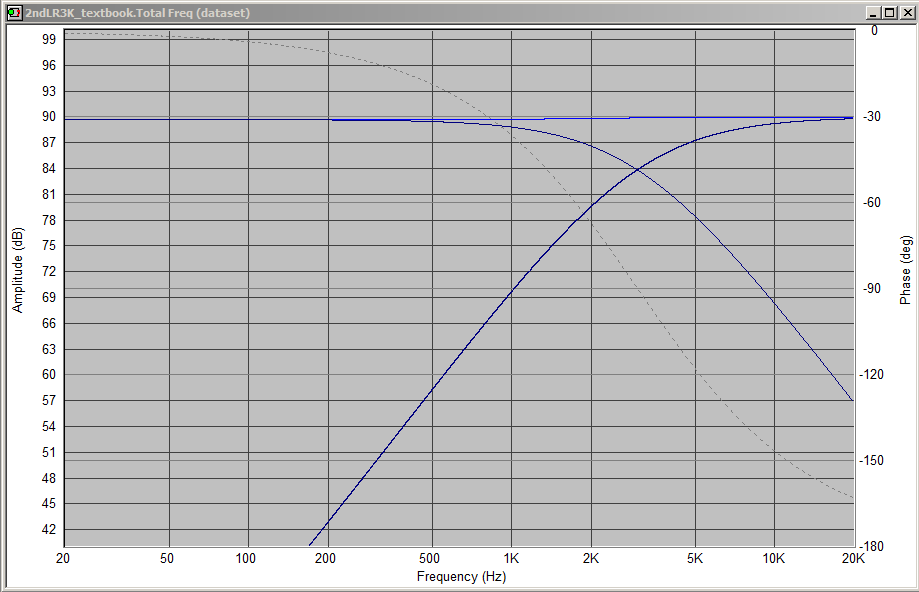
Note how there is a step in the frequency response. This is due to the resistance inherent in the inductor which is in series with the woofer. For this sim I used 0.29 ohms for the DCR of the coil. It is not too significant but it does show that even with our perfect drivers we have not got a perfectly flat result with out text book crossover.
Next we will show what happens if we use actual impedance curves for real drivers (but still with our perfectly flat frequency response). I've chosen a Dayton RS150P-8 for the woofer and a Morel DMS37 for the tweeter, as I happen to have frd and zma's for both. Everything is the same except for the real-impedance curves being used in the sim.
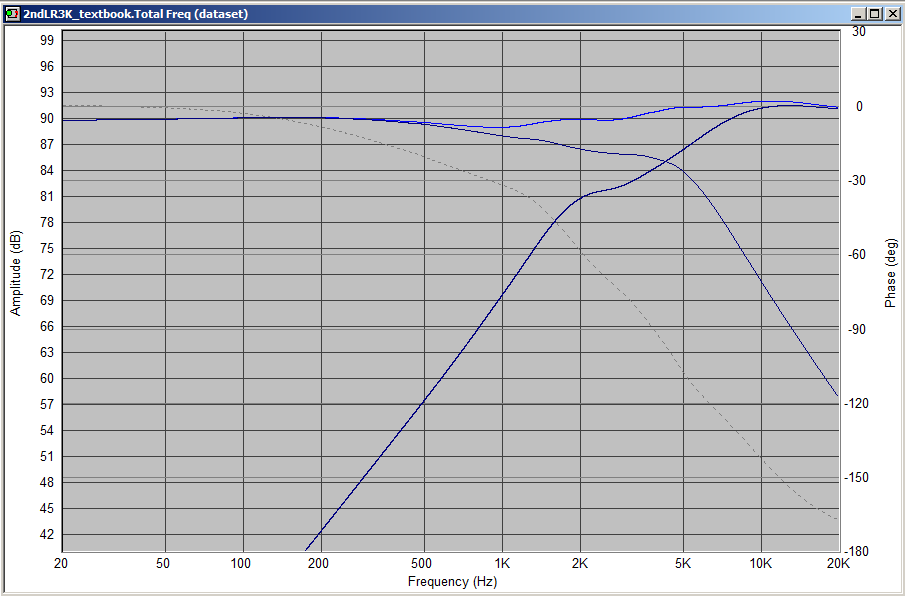
Whoah!! What happened to our nice flat response!! Textbook crossovers only give a text book response with a flat impedance, which the above demonstrates very well . Now it is possible to greatly improve this by using impedance compensation on the drivers, but that is not necessarily something you need to do as you will see later when we do a more optimal crossover.
. Now it is possible to greatly improve this by using impedance compensation on the drivers, but that is not necessarily something you need to do as you will see later when we do a more optimal crossover.
So now we add in the real responses of the Dayton and Morel drivers and see what we get.
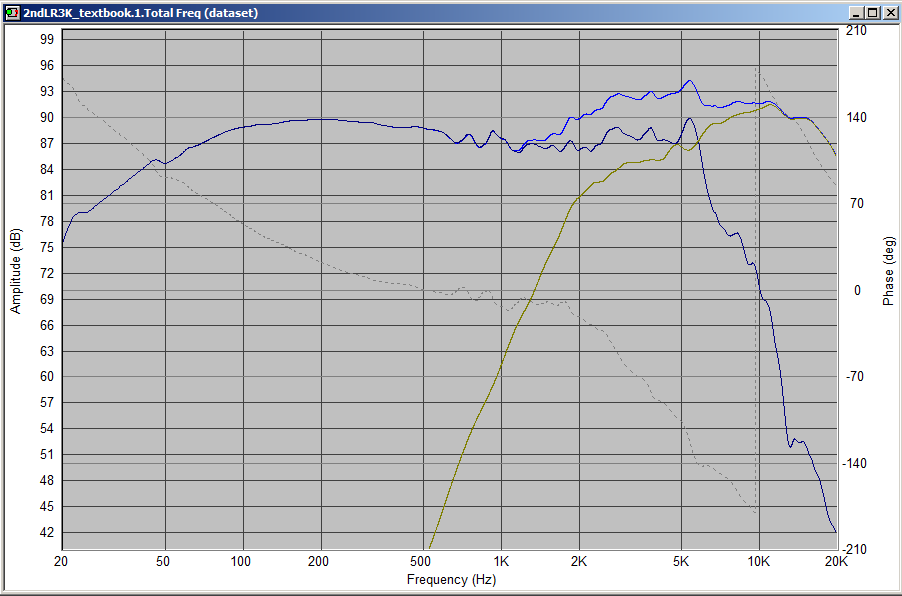
Probably not really what we want! So you can see that if we just used our text book crossover with our two new drivers, that we would likely have a bit of a tweaking job on our hands!
Note that even the above is a very crude estimate of what would really happen, as we have not taken into account how the baffle effects the frequency response of our drivers, or how differences in driver offset on the baffle affects their phase relationship to each other, in reality the above probably looks even better than it would in real life!
One of the things that people starting out with crossover design fail to grasp is that it is the acoustic rolloff of the speaker that is the real goal not the electrical order of the filter. When we say we want a 2nd order linkwitz riley crossover, that doesn't necessarily mean that it will be an electrical linkwitz riley filter (for newbies I would actually suggest that a fourth order LR or bessel filter is much more likely to give them results that they will be happy with, 2nd order acoustic filters are not easy!) After having said that, what I come up with later, does appear to be a 2nd order electrical filter on both the woofer and the tweeter, but it doesn't always have to be. When doing 4th order targets I have achieved it with 2nd order on the woofer and 3rd order on the tweeter, it all depends on the drivers and the frequency you cross them at.
We can demonstrate this concept by adding some target slopes to the third graph. The red lines in the fourth graph are our target 2nd order L/R at 3Khz. These show how our speaker should roll off to get the best blending (assuming we also get the phase right, but more on that a bit later).
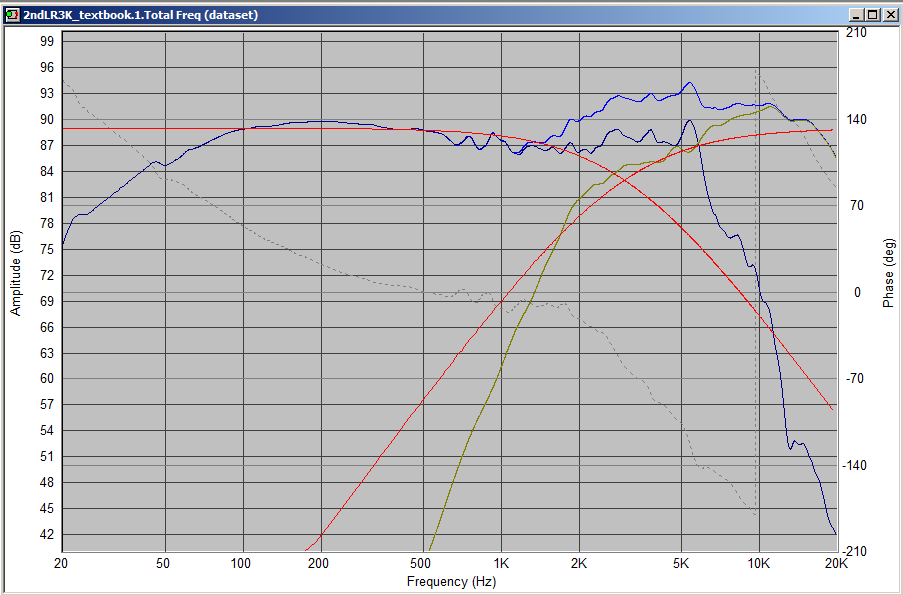
As can be seen the drivers are not following the target curves very well at all and the resulting frequency response is pretty awful. I'm sure if you got a result like this you would not be happy and wondering where you had gone wrong! We would be looking at quite a lot of tweaking by ear to sort out this mess, and without actually knowing whether it was the woofer, the tweeter or both that is causing the issue we would be stabbing in the dark.
So instead we can do some virtual tweaking and see what the results are with our sim. As previously stated I have not properly prepared these FRD's or put in proper offsets for drivers so this result is invalid, but is useful for demonstration purposes.
I spent maybe an hour playing around with some tweaks to get a result that is roughly +- 1.5db from approx 70 hz to 16Khz. It also has a good deep reverse null (meaning the drivers are in phase at the crossover frequency). Now of course I already have experience so that makes it faster, but I'm sure that trying to tweak this by ear would take an awful lot longer!
The new circuit is below:
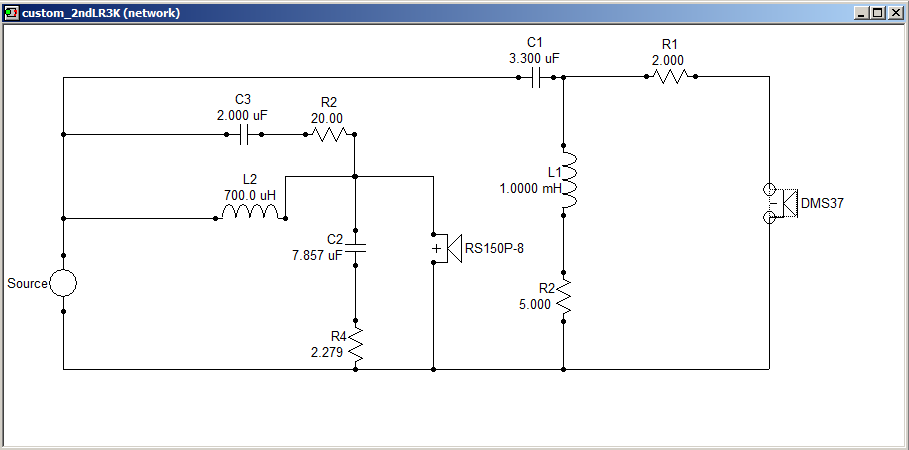
You can see that there has been a few additions, and also changes to values from our original textbook crossover. I used the optimizer on C2 and R4 which is why they have strange looking values, I would normally change them to the nearest standard value but was being lazy.
Below is the resulting frequency response using this new crossover.
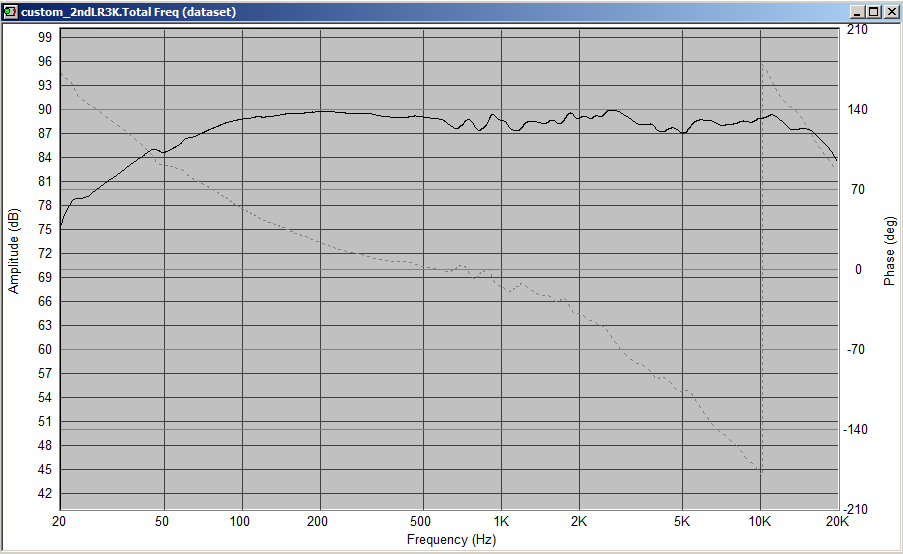
Looks quite a bit better doesn't it?
Next is the reverse null response which shows how well (or not) the drivers are in phase at the crossover frequency.
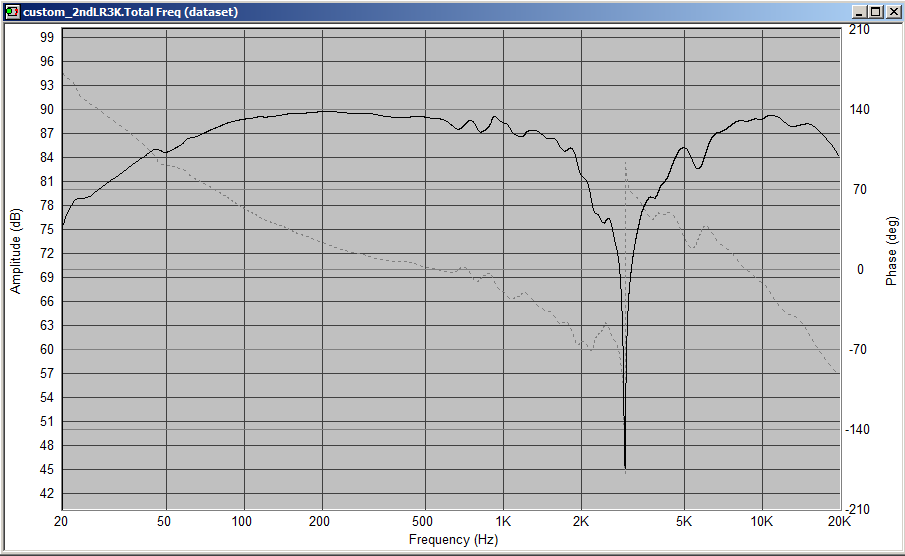
Now we show the individual driver responses and how well they track to the target LR2 curves. Also this graph shows each drivers phase. They do overlap at the crossover frequency but in general the overlap is fairly small, ideally you would have a much wider range where the drivers are in phase...
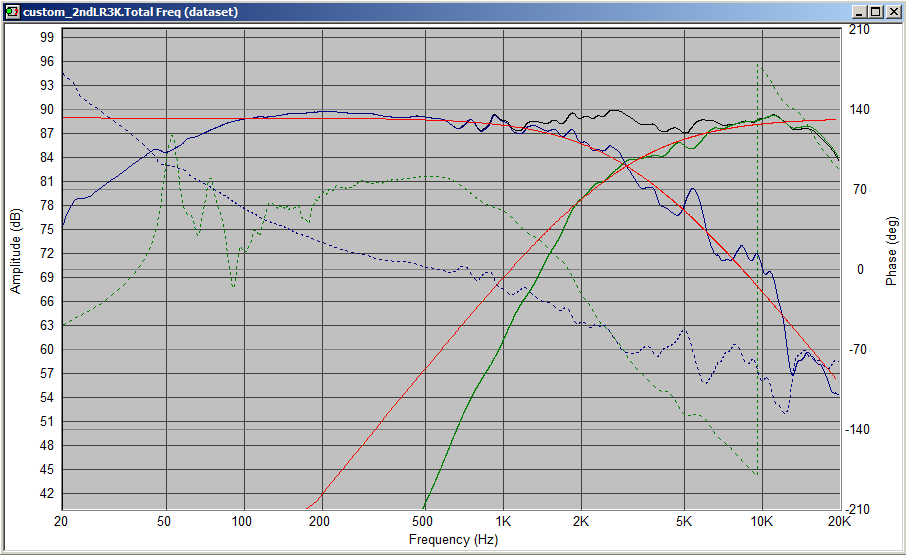
The coil and resistor on the tweeter circuit are there for phase adjustment only. Without them the tweeter follows the target curve better at lower frequencies but the phase alignment is bad at the crossover point.
One last image shows the difference between our custom crossovers response (black) compared to our textbook crossover (blue).
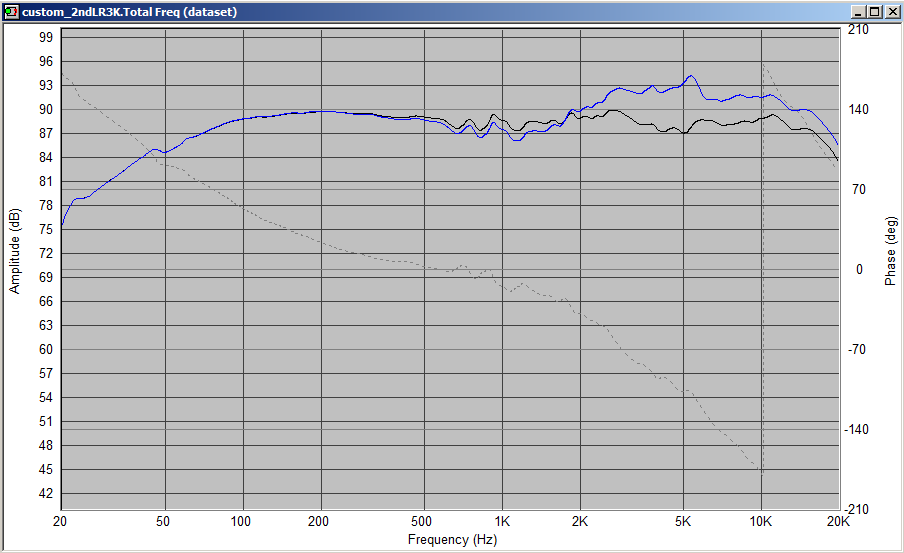
Hopefully this has helped show why a text-book crossover almost certainly will not give you the result that you want.
Tony.
*if such drivers existed, there would not be any need for a crossover in the first place
This is the easy bit right? Just go to an online calculator put in the frequency you want to crossover at and it will spit out the values right? Or just go to partsexpress and purchase a ready made crossover that crosses over at a suitable frequency.
If only it were this easy. If speakers had a completely flat frequency response, and a completely flat impedance, and the distance from each driver to your ears was the same then yes that would work*, however that is not the case in reality and we need to take these things into account.
A crossover filter does not just cut off the frequency at a particular frequency, it gradually rolls off the speakers responses over a fairly large range. In this range BOTH drivers are adding together to form the sound. For this to work ideally, both drivers need to be adding together equally and need to be in phase with each other through this range.
Lets see what happens with our theoretically flat speaker with a completely flat impedance using our text book crossover. For this we have two speakers which are both 90db efficient, completely flat and have a completely flat 8 ohms resistance. Now if you had such drivers you wouldn't be making a crossover in the first place, but it serves to demonstrate what is happening.
The schematic is for a textbook 2nd order linkwitz riley crossover at 3Khz. Calculated using this online calculator Speaker Crossover Calculators by V-Cap
Note if the images look a bit small try clicking on them and they should expand to full size.
The graph is showing the summed response of the two drivers and the rolloff of each driver. See how wide the range is where it is both drivers that are summing together to make the flat response (It's almost from 200Hz through to 20Khz)!
Note how there is a step in the frequency response. This is due to the resistance inherent in the inductor which is in series with the woofer. For this sim I used 0.29 ohms for the DCR of the coil. It is not too significant but it does show that even with our perfect drivers we have not got a perfectly flat result with out text book crossover.
Next we will show what happens if we use actual impedance curves for real drivers (but still with our perfectly flat frequency response). I've chosen a Dayton RS150P-8 for the woofer and a Morel DMS37 for the tweeter, as I happen to have frd and zma's for both. Everything is the same except for the real-impedance curves being used in the sim.
Whoah!! What happened to our nice flat response!! Textbook crossovers only give a text book response with a flat impedance, which the above demonstrates very well
So now we add in the real responses of the Dayton and Morel drivers and see what we get.
Probably not really what we want! So you can see that if we just used our text book crossover with our two new drivers, that we would likely have a bit of a tweaking job on our hands!
Note that even the above is a very crude estimate of what would really happen, as we have not taken into account how the baffle effects the frequency response of our drivers, or how differences in driver offset on the baffle affects their phase relationship to each other, in reality the above probably looks even better than it would in real life!
One of the things that people starting out with crossover design fail to grasp is that it is the acoustic rolloff of the speaker that is the real goal not the electrical order of the filter. When we say we want a 2nd order linkwitz riley crossover, that doesn't necessarily mean that it will be an electrical linkwitz riley filter (for newbies I would actually suggest that a fourth order LR or bessel filter is much more likely to give them results that they will be happy with, 2nd order acoustic filters are not easy!) After having said that, what I come up with later, does appear to be a 2nd order electrical filter on both the woofer and the tweeter, but it doesn't always have to be. When doing 4th order targets I have achieved it with 2nd order on the woofer and 3rd order on the tweeter, it all depends on the drivers and the frequency you cross them at.
We can demonstrate this concept by adding some target slopes to the third graph. The red lines in the fourth graph are our target 2nd order L/R at 3Khz. These show how our speaker should roll off to get the best blending (assuming we also get the phase right, but more on that a bit later).
As can be seen the drivers are not following the target curves very well at all and the resulting frequency response is pretty awful. I'm sure if you got a result like this you would not be happy and wondering where you had gone wrong! We would be looking at quite a lot of tweaking by ear to sort out this mess, and without actually knowing whether it was the woofer, the tweeter or both that is causing the issue we would be stabbing in the dark.
So instead we can do some virtual tweaking and see what the results are with our sim. As previously stated I have not properly prepared these FRD's or put in proper offsets for drivers so this result is invalid, but is useful for demonstration purposes.
I spent maybe an hour playing around with some tweaks to get a result that is roughly +- 1.5db from approx 70 hz to 16Khz. It also has a good deep reverse null (meaning the drivers are in phase at the crossover frequency). Now of course I already have experience so that makes it faster, but I'm sure that trying to tweak this by ear would take an awful lot longer!
The new circuit is below:
You can see that there has been a few additions, and also changes to values from our original textbook crossover. I used the optimizer on C2 and R4 which is why they have strange looking values, I would normally change them to the nearest standard value but was being lazy.
Below is the resulting frequency response using this new crossover.
Looks quite a bit better doesn't it?
Next is the reverse null response which shows how well (or not) the drivers are in phase at the crossover frequency.
Now we show the individual driver responses and how well they track to the target LR2 curves. Also this graph shows each drivers phase. They do overlap at the crossover frequency but in general the overlap is fairly small, ideally you would have a much wider range where the drivers are in phase...
The coil and resistor on the tweeter circuit are there for phase adjustment only. Without them the tweeter follows the target curve better at lower frequencies but the phase alignment is bad at the crossover point.
One last image shows the difference between our custom crossovers response (black) compared to our textbook crossover (blue).
Hopefully this has helped show why a text-book crossover almost certainly will not give you the result that you want.
Tony.
*if such drivers existed, there would not be any need for a crossover in the first place
Attachments
-
 2nd_order_lr_textbook.png8.9 KB · Views: 2,147
2nd_order_lr_textbook.png8.9 KB · Views: 2,147 -
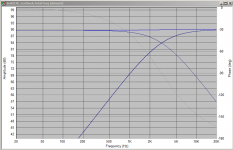 2nd_order_lr_textbook_response_flat_drivers.png20.2 KB · Views: 2,171
2nd_order_lr_textbook_response_flat_drivers.png20.2 KB · Views: 2,171 -
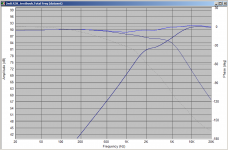 2nd_order_lr_textbook_response_flat_drivers_real_impedances.png21.2 KB · Views: 2,053
2nd_order_lr_textbook_response_flat_drivers_real_impedances.png21.2 KB · Views: 2,053 -
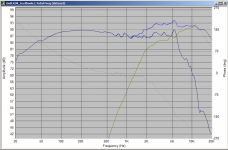 2nd_order_lr_textbook_response_real_drivers_real_impedances.png23.1 KB · Views: 2,045
2nd_order_lr_textbook_response_real_drivers_real_impedances.png23.1 KB · Views: 2,045 -
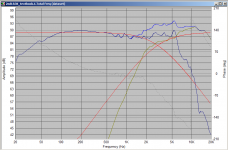 2nd_order_lr_textbook_response_real_drivers_real_impedances_with_taregts.png25.5 KB · Views: 2,016
2nd_order_lr_textbook_response_real_drivers_real_impedances_with_taregts.png25.5 KB · Views: 2,016 -
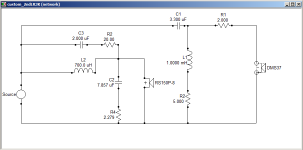 custom_crossover.png12.8 KB · Views: 1,982
custom_crossover.png12.8 KB · Views: 1,982 -
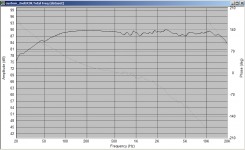 custom_2nd_order_lr_rev_simple.png19.3 KB · Views: 1,925
custom_2nd_order_lr_rev_simple.png19.3 KB · Views: 1,925 -
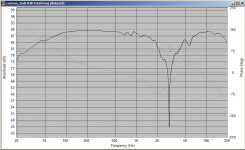 custom_2nd_order_lr_rev_null.png19.9 KB · Views: 1,914
custom_2nd_order_lr_rev_null.png19.9 KB · Views: 1,914 -
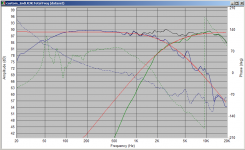 custom_2nd_order_lr_phase.png26.5 KB · Views: 1,913
custom_2nd_order_lr_phase.png26.5 KB · Views: 1,913 -
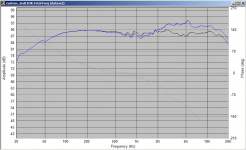 custom_vs_textbook.png20.5 KB · Views: 1,891
custom_vs_textbook.png20.5 KB · Views: 1,891
Last edited:
Wow!
Go ahead. Take the fun out of diy. I dont care how it measures. At the end of the day it is how it sounds to me and my ears in my chair in my listening position in my room that will tell me if it sounds good or not.
I have a load of crossover parts and like to experiment.
It can be done, no problem.
Maybe a flat response speaker does not appeal to me? Then what? Tweak by ear is the answer.
Go ahead. Take the fun out of diy. I dont care how it measures. At the end of the day it is how it sounds to me and my ears in my chair in my listening position in my room that will tell me if it sounds good or not.
I have a load of crossover parts and like to experiment.
It can be done, no problem.
Maybe a flat response speaker does not appeal to me? Then what? Tweak by ear is the answer.
This page is a good start...
Quote: "The question is whether we can make a crossover at all without measurements - and the answer is NO.
It cannot be done, and crossovers cannot be calculated."
Marco
That's just the sort of thing I'm looking for. I'm sure some will still disregard the information in the link, but you can't help some people - it should help a few though.
Wow!
Go ahead. Take the fun out of diy. I dont care how it measures. At the end of the day it is how it sounds to me and my ears in my chair in my listening position in my room that will tell me if it sounds good or not.
I have a load of crossover parts and like to experiment.
It can be done, no problem.
Maybe a flat response speaker does not appeal to me? Then what? Tweak by ear is the answer.
You could tweak by ear forever and still never achieve a flat response at your listening position.
It's only when you have accurate measurements imported into crossover design software that you can see with your own eyes how bad simple crossovers will sound and how they react to tweaking by ear (rarely as you'd expect).
I have to agrea here with korpberget a little bit
So ok you measure and design a loudspeaker with the "perfect" crossover from scratch getting a flat frequency Then you put it in a normal room that has reflections and al sorts of imperfections.... I mean nothing is perfect.....
If you just want simple 2 way PA tops for DJ-ing on party's with a lot of drunken people..... they won't bother as long as there is enough Bass and Sub.
It is however good to design crossovers from scratch or to adjust ready made crossovers. It is not that difficult to use the speakers DCR etc... and make the crossovers adjusted for your speakers. To measure the exact response is more difficult and not always needed. Many commercial speakers aren't measured also.
And if you make something that sounds good to you and you can enjoy then just enjoy it. I think some people are just constant nagging and never listen to music.
So ok you measure and design a loudspeaker with the "perfect" crossover from scratch getting a flat frequency Then you put it in a normal room that has reflections and al sorts of imperfections.... I mean nothing is perfect.....
If you just want simple 2 way PA tops for DJ-ing on party's with a lot of drunken people..... they won't bother as long as there is enough Bass and Sub.
It is however good to design crossovers from scratch or to adjust ready made crossovers. It is not that difficult to use the speakers DCR etc... and make the crossovers adjusted for your speakers. To measure the exact response is more difficult and not always needed. Many commercial speakers aren't measured also.
And if you make something that sounds good to you and you can enjoy then just enjoy it. I think some people are just constant nagging and never listen to music.
Yes you can probably get something that sounds pretty good if you start with textbook and tweak by ear, but I would guess that you will never achieve the best sound that you could get out of those particular drivers unless you take measurements and design with those.
Additionally without knowing where the problems are, tweaking by ear is a largely trial and error (and therefore likely very time consuming) method. If that gives someone enjoyment then nothing wrong with it. But if it means many hours of not being happy with the sound, then perhaps it is not so great..
Many designers do not design for flat response, measurements just show what is going on, both in the frequency and time domain, you can use that information to design whatever you want!
Personally I think getting the two drivers to seamlessly integrate is probably the biggest challenge, and the thing that will make the biggest difference when you get it right. IMO it can make the difference between an OK speaker and a fantastic speaker. I doubt I'd be able to do it without measurements.
Tony.
Additionally without knowing where the problems are, tweaking by ear is a largely trial and error (and therefore likely very time consuming) method. If that gives someone enjoyment then nothing wrong with it. But if it means many hours of not being happy with the sound, then perhaps it is not so great..
Many designers do not design for flat response, measurements just show what is going on, both in the frequency and time domain, you can use that information to design whatever you want!
Personally I think getting the two drivers to seamlessly integrate is probably the biggest challenge, and the thing that will make the biggest difference when you get it right. IMO it can make the difference between an OK speaker and a fantastic speaker. I doubt I'd be able to do it without measurements.
Tony.
Oh and we do already have an excellent tutorial by AllenB which is a sticky Introduction to designing crossovers without measurement
It is for people who don't want to do measurements but is a lot more than just doing some textbook stuff. Allen's tutorial will get you IMO a lot further than just using a textbook or pre-made crossover and then trying to tweak it!
Tony.
It is for people who don't want to do measurements but is a lot more than just doing some textbook stuff. Allen's tutorial will get you IMO a lot further than just using a textbook or pre-made crossover and then trying to tweak it!
Tony.
A wise person once assured me that "all generalizations are false including this one." Do It Your way! Have a little fun, unless that dilutes the experience of being smarter than the rest of us.
Thanks for mentioning the AllanB sticky. That has helped me get my head around the basics.
Thanks for mentioning the AllanB sticky. That has helped me get my head around the basics.
What i'm learning from this thread is people that don't understand crossover design think that you can produce a speaker with good sound just by using your ears or crossover calculators etc.
Maybe it's not something that can be explained easily or maybe they didn't read the links properly?
I've heard crossovers designed by ear and they they are great if you only want to play a small selection of your music. People blame the harsh/dull or whatever sound on bad recordings. The better you get at crossover design, the more these bad recordings become good recordings.
Maybe it's not something that can be explained easily or maybe they didn't read the links properly?
I've heard crossovers designed by ear and they they are great if you only want to play a small selection of your music. People blame the harsh/dull or whatever sound on bad recordings. The better you get at crossover design, the more these bad recordings become good recordings.
A wise person once assured me that "all generalizations are false including this one." Do It Your way! Have a little fun, unless that dilutes the experience of being smarter than the rest of us.
Thanks for mentioning the AllanB sticky. That has helped me get my head around the basics.
That is the point I wanted to make. When I tell people I make my own speakers then they immediately say "yeah k but they will not be perfect like a speaker you can buy...." Ok I am completely convinced that measuring can help the designing a lot. You can see what you are doing etc...and with havng software like REW and measuring microphones that are affordable these days it's something A diy'er should consider.
On the other end if someone just wants to make a speaker that sounds good for him it's not that it will be "bad" or "crap" it al depends on drivers and woodworking skills and some basic logic thinking (no a 4" woofer is not going to give you earthshaking sub for example.....) It can be quite good, but ok if you measure the combination you can make it most of the time even better.
On the other had doing only measurements and no listening tests is not always good either....
For example we had a PA line array system that was completely flat with loads of filters/EQ/delay correction and measured good.
Now I didn't like the sound of it it sounded lifefless.
now we made an other setting using our ears and also measuring the response. We used less correction EQ also and let the response a little bit less flat. It was way better overall sounding.
It's just an example
Saying you can't make a good speaker with conventional crossover without taking measurements is a step to far I think. Using the datasheets of the drivers with sometimes the response of the driver and carefull thinking you can achieve good things.
Saying you can make that same speaker even better by measuring it and make small adjustments when needed I think is completely true but if you go to the extremes and start using a lot of EQ correction etc..... it will not always be "better" Using an active speaker processor to test crossover point ideas is also nice to have. afterwards you can make a passive version (taking into account the thiele/small parameters of the driver).
Just to say I don't want to offend someone he
Many modern recordings do sound like "crap" in my opinion. LOADS of compresion/ highs boosted to the extreme/ 40-70Hz is boosted and extra compressed Sounds spectacular for the first minute, afterwards I turn it off. Stereo effects are added because not many musicians play together like a group and everything is recorded at different times. For me that is not likea group playing music. A group playing together is different. and the there is autotune......yuk Ok there are nice recordings also but modern popmusic...... Some Jazz vocals sound superb. But indeed on many speakers the choice of crossover points is already faulty (tweeter crossed way to low etc...) to begin with and it will sound harsh on the S sounds etc....What i'm learning from this thread is people that don't understand crossover design think that you can produce a speaker with good sound just by using your ears or crossover calculators etc.
Maybe it's not something that can be explained easily or maybe they didn't read the links properly?
I've heard crossovers designed by ear and they they are great if you only want to play a small selection of your music. People blame the harsh/dull or whatever sound on bad recordings. The better you get at crossover design, the more these bad recordings become good recordings.
BTW nice tutorial it will get you in a good direction to start
Last edited:
Yes. It depends what you mean by "a lot of EQ", but it should never really be necessary, it is better to live with some frequency response irregularities than to try and correct them with excessive EQ, it will do more harm than good.Saying you can make that same speaker even better by measuring it and make small adjustments when needed I think is completely true but if you go to the extremes and start using a lot of EQ correction etc..... it will not always be "better"
That target would be a pleasing response. A bit like adding or subtracting a couple decibels of tweeter for recordings lacking same or particular room response. These systems, when sold, didn't come with measuring gear for the purchaser.(surely there can't be any targets if it's done by ear)
- Home
- Loudspeakers
- Multi-Way
- Why simple crossovers, tuned by ear, don’t work